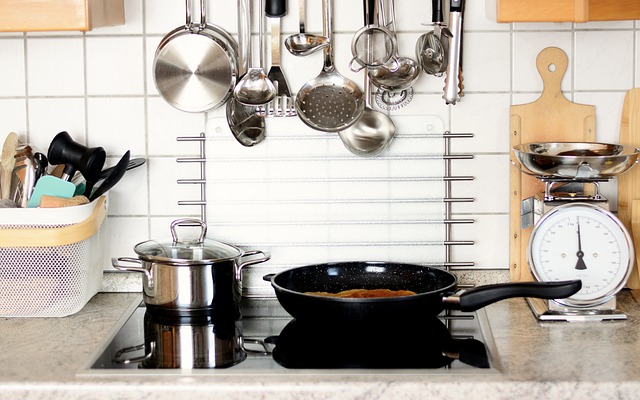Choosing the right cookware is crucial for optimizing your induction cooking experience. Induction stoves require specific types of cookware that can effectively respond to the electromagnetic fields and provide efficient heat transfer. In this comprehensive guide, we will explore the key factors to consider when selecting cookware for induction cooking and provide insights to help you make informed choices.
- Induction-Compatible Cookware Materials:
Induction stoves rely on magnetic fields to generate heat, so it is essential to choose cookware with a magnetic base. The following materials are induction-compatible:
a. Stainless Steel: Stainless steel cookware with a magnetic stainless steel or encapsulated aluminum base is an excellent choice for induction cooking. Look for cookware labeled as “induction-ready” or “induction-compatible.”
b. Cast Iron: Cast iron cookware is naturally induction-friendly due to its magnetic properties. It offers excellent heat retention and even heat distribution, making it ideal for a wide range of cooking tasks.
c. Enameled Cast Iron: Enameled cast iron cookware provides the benefits of cast iron while offering a non-reactive and easy-to-clean enamel coating. Ensure the enamel coating is intact and free from any cracks or chips for optimal performance on induction stoves.
d. Carbon Steel: Carbon steel cookware, similar to cast iron, is magnetic and well-suited for induction cooking. It is durable, lightweight, and heats up quickly.
- Flat Bottom and Uniform Thickness:
For efficient heat transfer on induction stoves, choose cookware with a flat, smooth bottom. A flat bottom ensures maximum contact with the induction cooktop, facilitating effective heat distribution. Avoid cookware with ridges, grooves, or uneven surfaces that can interfere with heat transfer.
Additionally, consider the thickness of the cookware. Opt for cookware with a uniform thickness throughout the base and sides, as it helps distribute heat evenly and prevents hot spots.
- Size and Compatibility:
Select cookware that matches the size of the induction cooking zones on your stove. If the cookware’s base is smaller than the cooking zone, it may not receive sufficient heat and result in inefficient cooking. Conversely, oversized cookware can lead to heat loss and uneven cooking.
Check the manufacturer’s recommendations or look for specific indications of compatibility with induction cooking. Some cookware may have a symbol or label indicating its suitability for induction stoves.
- Quality and Durability:
Invest in high-quality cookware that will withstand the rigors of induction cooking. Look for reputable brands known for their craftsmanship and durability. Quality cookware tends to have better heat distribution, allowing for precise temperature control and consistent results.
Examine the handles and lids of the cookware to ensure they are sturdy and heat-resistant. Comfortable and ergonomic handles enhance safety and ease of use.
- Maintenance and Care:
Consider the maintenance requirements of the cookware. Some induction-compatible materials, such as stainless steel and enameled cast iron, are generally easy to clean and maintain. Non-stick coatings can also be compatible with induction cooking, but make sure they are specifically labeled as such.
Refer to the manufacturer’s instructions for cleaning recommendations and avoid abrasive cleaners or harsh scrubbing tools that may damage the cookware’s surface.
Conclusion:
Choosing the right cookware is essential for optimizing your induction cooking experience. Look for induction-compatible materials like stainless steel, cast iron, enameled cast iron, and carbon steel. Ensure the cookware has a flat bottom, uniform thickness, and is appropriately sized for your induction stovetop. Invest in high-quality, durable cookware that will last, and follow proper maintenance guidelines for optimal performance.
With the right cookware in hand, you’ll be ready to unlock the full potential of induction cooking and enjoy precise, efficient, and delicious culinary creations in your kitchen


